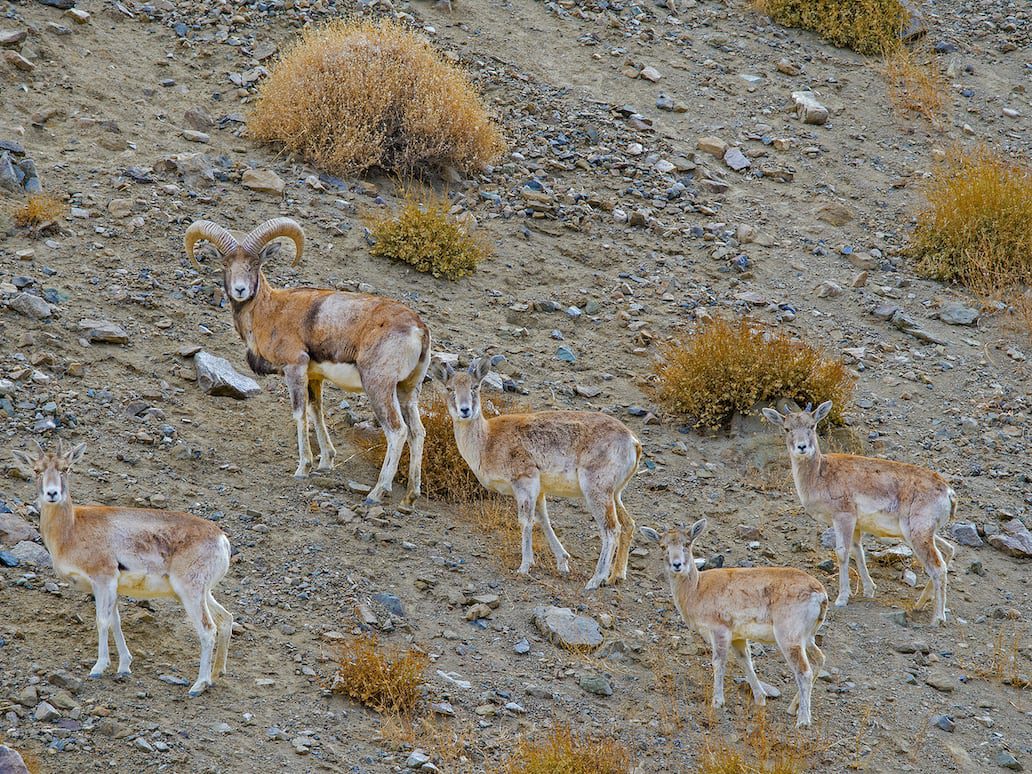The Ladakh Urial, or Ovis vignei vignei, is a unique and vulnerable subspecies of wild sheep found in the cold desert regions of Ladakh. Over the years, its population has faced severe threats due to habitat loss, illegal hunting, and infrastructure development. This article delves deep into its taxonomy, habitat, behavior, and conservation efforts while shedding light on the challenges it faces and the strategies needed to ensure its survival.
Table of Contents
- Introduction
- Taxonomy and Classification
- Physical Characteristics of Ladakh Urial
- Distribution and Habitat
- Behavior and Ecology
- Threats to Ladakh Urial
- Conservation Efforts and Studies
- Current Population Status
- Importance of Ladakh Urial Conservation
- Frequently Asked Questions (FAQs)
Introduction
The Ladakh Urial, locally known as Shape (male) or Shamo (female), is a rare and endangered species of wild sheep endemic to the Union Territory of Ladakh in India. This species, classified as “Vulnerable” under the IUCN Red List, inhabits high-altitude terrain ranging from 3,000 to 4,250 meters. Despite its ecological significance, the Ladakh Urial remains one of the least studied species in the region, often overshadowed by the snow leopard.

Taxonomy and Classification
The taxonomy of the Ladakh Urial is well-defined within the wild sheep species. The following table summarizes its classification:
| Category | Details |
|---|---|
| Scientific Name | Ovis vignei vignei |
| Common Names | Ladakh Urial, Red Sheep, Shapo, Shapu |
| IUCN Status | Vulnerable |
| WLPA Status | Schedule I |
| Geographical Range | Ladakh (India), Gilgit-Baltistan (Pakistan), and Chitral |
| Elevation Range | 3,000 to 4,250 meters |
The species belongs to the larger group of wild sheep under the genus Ovis. Edward Blyth, a British zoologist, first proposed the name Ovis vignei in 1841 in honor of explorer Godfrey Vigne.
Physical Characteristics of Ladakh Urial
The Ladakh Urial is distinguished by its unique physical features that set it apart from other wild sheep like the Argali or Ibex. Below are the key physical characteristics:
- Head and Body Length: Males measure between 109–116 cm, while females are smaller.
- Height at Shoulder: Males stand at 91 cm, and females at 68 cm.
- Horn Length: Male horns measure between 63–73 cm, curling semi-circularly outward and backward.
- Coat and Markings: Reddish-grey coat in winter with a piebald ruff and black-and-white saddle. The face, bib, underparts, and lower legs are white.
- Weight: Average weight ranges from 35–90 kg.
Comparison Between Ladakh Urial and Argali
| Feature | Ladakh Urial | Argali |
|---|---|---|
| Size | Smaller (109–116 cm) | Larger (up to 190 cm) |
| Coat | Reddish-grey with distinct saddle | Grey-brown with less contrast |
| Horns | Thinner and closely ringed | Thicker and heavier |
Distribution and Habitat
The Ladakh Urial occupies restricted patches within the alpine steppes, rolling hills, and arid highlands of Ladakh. This species thrives in open terrains rather than rocky mountain slopes, differentiating it from the Blue Sheep and Ibex.
Key Locations of Distribution
- India: Union Territory of Ladakh (Indus Valley, Nubra Valley, Bodkharbu, Shayok).
- Pakistan: Gilgit-Baltistan, Chitral district, and Khyber Pakhtunkhwa.
- Central Asia: Small patches in northern Pakistan and southeastern Afghanistan.
Preferred Habitat
- Rolling hills and gentle slopes
- Valley floors with large grazing areas
- Elevation between 3,000 to 4,250 meters
- Floodplains near water sources, such as the Indus and Shayok rivers

Behavior and Ecology
Ladakh Urials are primarily grazers, feeding on grasses, forbs, and occasionally leaves from trees and bushes. Their behavior varies according to the breeding season:
- All-male Herds: Male Urials often form separate herds outside the breeding season.
- Female Groups: Ewes and young are observed separately during non-breeding months.
- Mixed Herds: During the breeding season (autumn), males join female herds.
Breeding Season
The breeding season occurs in the autumn months, with most lambs born after a gestation period of about five months. Ewes seek isolated, upper reaches of gullies to give birth, ensuring safety for the young.
Threats to Ladakh Urial
The population of Ladakh Urial faces numerous threats, primarily driven by human activities:
- Habitat Loss: Development of infrastructure, including roads and guesthouses, along riverbanks reduces grazing areas.
- Illegal Hunting: Poaching remains a critical issue despite legal protection.
- Overgrazing: Increased livestock population competes with Urials for limited grazing resources.
- Fragmented Populations: The restricted range and fragmented habitats prevent genetic diversity.

Customer Testimonial
“Visiting Ladakh and witnessing the rare Ladakh Urial in its natural habitat was a once-in-a-lifetime experience. These creatures are absolutely majestic, and their survival is crucial to the region’s ecological balance. The local conservationists are doing an incredible job!”
– John Davis, Wildlife Photographer, United Kingdom
Frequently Asked Questions (FAQs)
1. Why is the Ladakh Urial endangered?
The Ladakh Urial is endangered due to habitat loss, illegal hunting, and competition with livestock for grazing resources.
2. Where can the Ladakh Urial be found?
The Ladakh Urial is found in the Union Territory of Ladakh, particularly around the Indus and Shayok rivers.
3. What are the physical features of the Ladakh Urial?
It has a reddish-grey coat, piebald ruff, and curved horns. Males measure up to 116 cm in length.
4. What measures are needed to conserve the Ladakh Urial?
Comprehensive research, habitat protection, and anti-poaching measures are required to ensure their survival.
5. What do Ladakh Urials eat?
They primarily graze on grasses and occasionally consume forbs and tree leaves.









